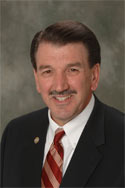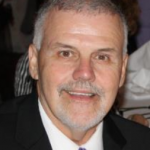Increasing college costs and decreasing employment opportunity have produced an avalanche of studies regarding the value of college degrees. Sometimes more information is not better. A “back to basics” understanding would be valuable to all.
“Nowadays people know the price of everything and the value of nothing.”
Oscar Wilde
_____________________________________
By Walter V. Wendler
Legitimate concerns about ever-increasing costs of college and a seemingly ever-decreasing availability of good paying jobs for the holders of degrees have generated studies that make a student’s and parent’s head spin.
 Recently, EducationSector, a think-tank that ponders education policy, published an investigation by Andrew Gillen, “In Debt and in the Dark: It’s Time for Better Information on Student Loan Defaults.” The findings were reported in USA Today under the headline, “College Default Rates Higher Than Graduation Rates.”
Recently, EducationSector, a think-tank that ponders education policy, published an investigation by Andrew Gillen, “In Debt and in the Dark: It’s Time for Better Information on Student Loan Defaults.” The findings were reported in USA Today under the headline, “College Default Rates Higher Than Graduation Rates.”
The claim in the Gillen study, reiterated by USA Today, asserts that more students are defaulting on education loans than graduating. No secret to those who work with learners daily. The strongest students finish their degrees more closely to the traditional four-year benchmark, typically work diligently in part-time jobs, double-time in the summer, to avoid borrowing too much money. They enter the workforce or graduate school closer to flush and ready to move forward.
When tagging someone “a good student” this, in part, is what is meant.
Gillen includes public two-year institutions along with national research universities. I am not convinced that these institutional types were accounted for fully. For example if a two-year institution has a 6% graduation rate it’s possible that 80% of the students who enroll never intend to complete a degree program, but take job-related courses to increase skills, or square dancing, both valuable pursuits, neither reflective of the failure of post-secondary educational institutions.
Don’t get me wrong…I tell students and families every chance I get, “Don’t borrow…find lower cost alternatives.”
However, not all students are good students and statistics, bantered between one pundit and another, make little distinction between students regarding motivation, interest and determination.
Another freshly minted study by PayScale.com analyzed 1,511 schools to assess return on investment (ROI) for a college education against the predicted 30 year earning capacity for graduates in an effort to rate “value.” Financial aid was factored in. Looking through the list and trying to understand the self-reported data is mind-boggling. Unfortunately, the effort produces little more than fear, trepidation and misinformation about value.
The usual “good universities” occupy the top spots: generally selective/expensive schools that lead to good jobs for competitive, well-prepared, motivated students. Prestige is earned, never given…to paraphrase a potent line from the U.S. Marines. The basement of the list includes for-profit, public and private institutions that accept any student with resources. Nothing else seems to matter and the potential for prestige is mindlessly squandered.
A scant two dozen of the 1,511 schools are shown to have a negative ROI. However, that does not make the rest a guaranteed good investment. Shockingly, the difference between the best ROI and no ROI at all is less than 15%. Dedicated teachers and motivated students bedevil measurement and exist in some measure in any institution.
Noise and disarray are the results of many studies of the purported value of higher education.
Honest, forthright, university leadership must present clear information to students. Spinning and public relations are, respectively, political and retail machinations. Universities are neither.
Resisting unrealistic hope regarding the benefits of any degree requires stainless steel backbone in leaders, not acquiescence. Remember, earned, never given. Motivated students and faculty reduce the debt burden and increase effectiveness and opportunity.
Nothing else.
This is not elitism as is too frequently claimed, but legitimate, sensible realism that calibrates attitude, backbone and capability, the ABCs of educational success.
In the next decade of the 21st century our best universities and community colleges will be heralded for honesty, eclipsing the touchstones of access and excellence. University leadership must step up and transparently lay out the odds, tell ‘em the truth, as candidate Truman did in Harrisburg, Illinois in 1948.
The cat is out of the bag and the cacophony may be the overture of a symphony memorializing snake oil and lost trust.



